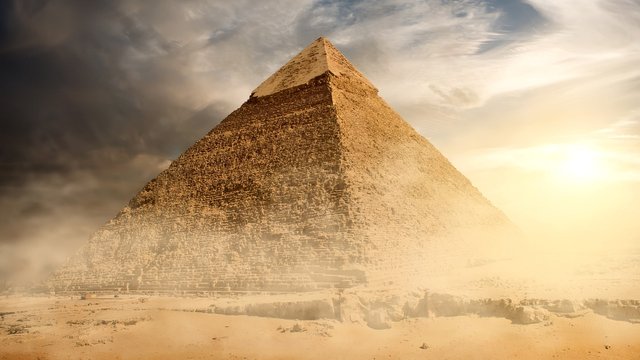Scientists May Solve Mystery Behind Egypt's

Pyramids A team of researchers at the University of North Carolina Wilmington has discovered that the pyramids were likely built on an ancient, now-hidden branch of the Nile. a under the desert and the field.
For many years, archaeologists believed that the ancient Egyptians used nearby waterways to transport materials such as stones needed to build the river pyramids. According to one of the authors of the study, Professor Eman Ghoneim, however, until now "no one is sure of the location, nature, size or proximity of this mega channel to the site of pyramid".
In the continental effort, the research team used satellite radar images, historical maps, geological surveys and plexiglass (a technique used by archaeologists to extract evidence from samples) to map the area. of the river - in which they believed he was buried. the drought and the great brown that fell thousands of years ago.
The research team can "go to the surface and take pictures of hidden objects using radar technology, according to research published in the journal Earth and Environmental Communications. Professor Ghoneim said that these features include "rivers that are buried in ancient structures" that run underground where "many of the ancient Egyptian pyramids lie".
One of the authors of the study, Dr. Suzanne Onstine, said, "Actually finding a branch of the river and having data that shows that there is a waterway that can be used to transport blocks, equipment, people and everything. helps us explain the structure of the pyramid."
The team found that the section of the river - Alaka Ahramat, which means pyramid "Ahramat" in Arabic - is about 64 km long and 200 to 700 meters (656 to 2,296 ft). has 31 pyramids, built 4700-3700 years ago.
The discovery of a branch of this extinct river helps explain the extent of the pyramids between Giza and Lisht (the burial place of the Middle Kingdom) in what is now the barren region of the Sahara Desert.
The proximity of the river branch to the pyramid structure indicates that it was "active and active during the construction of the pyramid," the report says.
Dr. Onstine explained that the ancient Egyptians "could use the power of the river to carry these heavy stones instead of human labor," adding that "it required very little effort."
The Nile was the lifeline of ancient Egypt - and still is today.